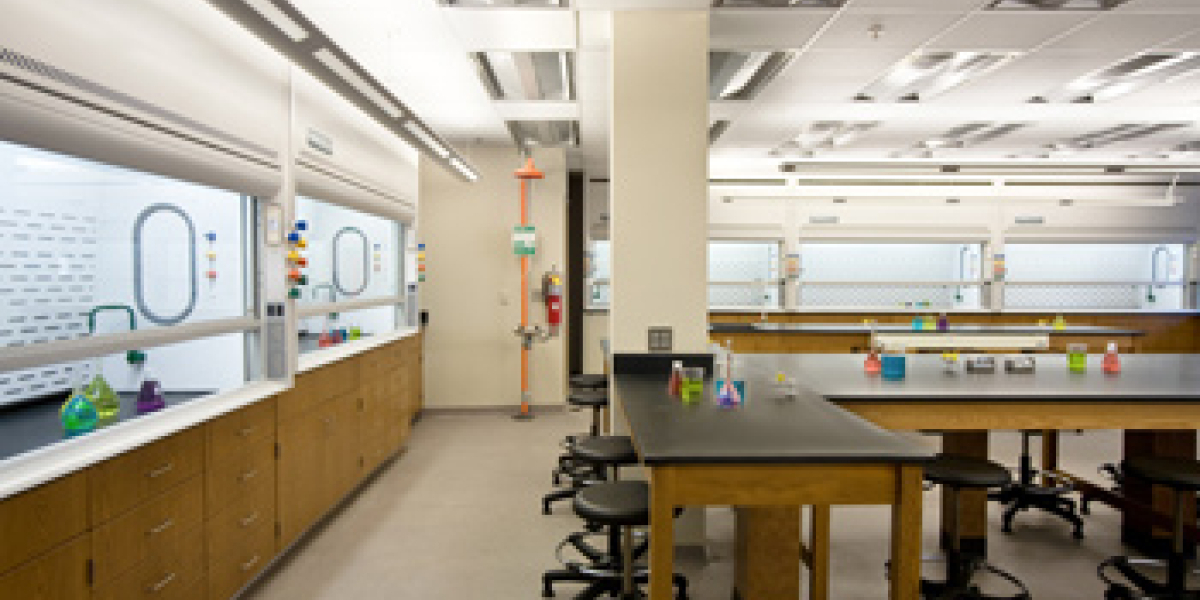Heat (BTU) Considerations, Laboratory Construction & Laboratory Equipment

ASHRAE Standard 55-2004 determines the temperature, humidity and airflow at which the average worker is comfortable; and though people in many industries have the luxury of dressing for the seasons, laboratory workers are usually burdened with an extra layer or two of protective garb. So, room atmosphere considerations also need to take into account that many laboratories have their own requirements as to temperature, humidity and airflow (ventilation). All of this adds up to a laboratory having very strict conditions of the facility’s internal air quality.
It is easy to say that heating and cooling are important aspects of the design of any structure for architects and engineers. It is even easier to say that these calculations are far from straight forward. Insert a lab into that construction project and you can have a real mess on your hands, and laboratory equipment can just muddy the waters further.
When equipment, such as fume hoods, Class II biological safety cabinets (BSCs) and glassware washers, are included in the building’s design and equipment specifications, it is easier to take their thermal load into consideration. Fume hoods don’t add considerable heat to the system. The caveat is that they remove a substantial volume of the air you have just heated/cooled for climate control.
Point in fact, a fume hood adds to the thermal load of a room approximately 100 BTU/hr per bulb/lamp (many fume hoods contain two bulbs). Since a fume hood is, or at least should be, under ventilation control when in operation, the heat emitted by the lamps is immediately drawn out of the lab by the mechanical system.
Substantial discussion can be had about the environmental impacts of fume hoods and how to save energy, but the fact remains, fume hoods play a major role in the quest for creating thermal balance, but not as a point of heat input.
Glassware Washers and, to a lesser extent, BSCs do impact the thermal load of a facility’s mechanical system. Some of the industries BSCs can contribute up to 2,000 to 5,000 BTU/hr¹ —this is alarming. In 2007, a manufacturer of Class II BSCs introduced a DC electronically commutated motor (ECM) driven fan and other energy efficient features and lowered the thermal load of their BSC to 785 to 1,670 BTU/hr. This reduction in heat production is significant, especially if multiple units are being installed. Glassware Washers, like any piece of equipment with a built-in heating element, contribute a large thermal load to any system.
Thermal load, in BTUs, are measured in minutes, not hours due to the heat they can produce. It is not unusual to find these in the 6,000 to 12,000 BTU/hr range (often seen as 100 BTU/min or higher). These are the equipment systems that you, as a design professional, can anticipate and account for in the design of the HVAC and mechanical systems.
However, there is a whole host of other types of laboratory equipment that are user provided that can be hidden, but should be expected. Such equipment includes:
- Freeze Dryers (lyophilizers)
- Incubators
- Refrigerators
- (Ultra Low) Freezers
- Chemical digestion/distillation equipment
- Autoclaves
- Laboratory ovens
- HPLC
- Atomic Adsorption
- Gas Chromatograph
- Burners & hotplates
These are the most common or the worst offenders for adding to the laboratory’s heat load. For example, a research-sized freeze dryer (1 to 12 L capacity) can run anywhere between 1,400 and 5,000 BTU/hr. Other equipment utilizing refrigeration will be similar.
Obviously, the final piece to this puzzle is the employees—the users of the space. How many of them will there be at any given time? What are they doing? How often are they using the above equipment?
Asking these and other questions, pertaining to the labs final lay out, can increase your ability to appropriately design and engineer a facility’s HVAC/mechanical systems. It will decrease your (and the customer’s) costs in the long run and make for fewer headaches. It doesn’t hurt to have the customer fetch some of this useful information for you either.
____________________________________________
¹ Range in thermal load represents four sizes of BSC from 3' width to 6' width
| chevron_left | Glove Boxes: The Effects of Gas Permeation and Equilibrium | Articles | Standard changes for chemical fume hood containment | chevron_right |






